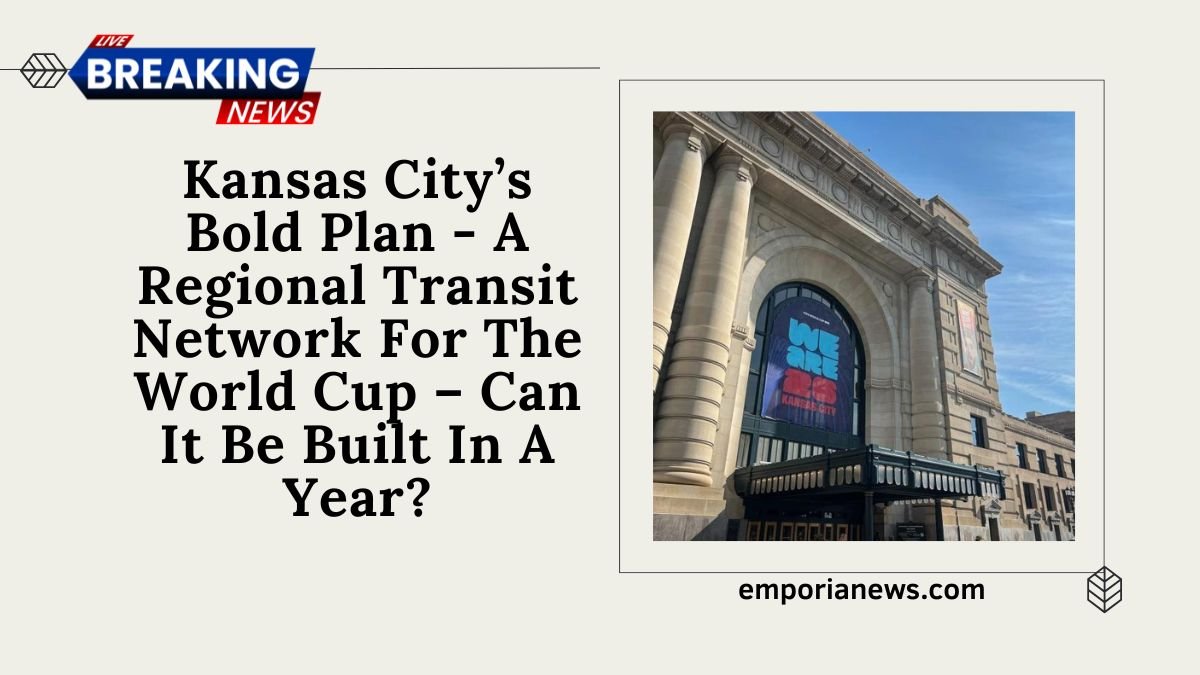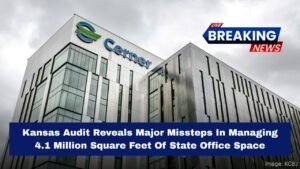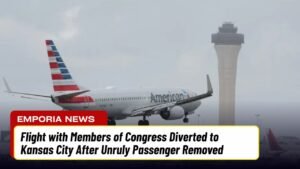With more than 650,000 visitors expected to flood Kansas City for the World Cup in 2026, ensuring efficient transportation will be a monumental challenge.
The city has set its sights on creating a regional transit network capable of handling the influx of fans while leaving behind a lasting legacy of improved public transportation. KC 2026, the organization spearheading the event’s planning, has made transportation a top priority.
The Big Challenge: Moving Hundreds of Thousands
The World Cup is a global event that attracts millions of fans, and for Kansas City, this means accommodating over 650,000 visitors in just a few short weeks.
This influx of people raises serious questions: How will fans get to and from the airport, stadiums, and fan events? What kind of transportation will be available, and will it be efficient and reliable?
Pam Kramer, the CEO of KC 2026, emphasized the importance of building a regional transit network that can handle the demands of the event while also showing the residents what public transportation in the metro could look like in the future.
FIFA, the governing body of the World Cup, mandates that host cities provide reliable transit between key locations: the airport, the stadium, and organized fan events. To meet these requirements, KC 2026 has already secured 200 leased buses for the duration of the World Cup.
A More Reliable Transit System for All
Kansas City has an existing transit system, but it faces many challenges, including slow service and limited coverage. To make the city’s transit network more efficient, KC 2026 aims to expand and improve the existing system, making it faster and more accessible.
The group has formed a transportation task force, which includes representatives from multiple counties and agencies, including Johnson and Wyandotte counties in Kansas, Kansas City, Missouri, the Kansas City Streetcar Authority, and the Kansas City Area Transportation Authority (KCATA).
While KCATA has made significant strides, it faces a funding cliff, preventing it from adding more drivers and buses. According to Frank White III, CEO of KCATA, the agency will need more funding to expand services and meet the increased demands during the World Cup.
Lawmakers have recognized this challenge and have pushed for federal funding to help build the infrastructure needed.
Senator Jerry Moran from Kansas and Representative Emmanuel Cleaver II from Missouri have reintroduced the Transportation Assistance for Olympic and World Cup Cities Act, which would provide much-needed funding for host cities.
Cutting Transit Times: The Road Ahead
KC 2026 hopes to leave a legacy of better public transportation long after the World Cup ends. A key part of this vision is reducing transit times. For example, traveling from Olathe to Union Station, which currently takes about 1 hour and 40 minutes by public transit, will be reduced to just 30 minutes with the new network.
This major improvement aims to make public transportation more attractive to residents who may have been hesitant to use it due to infrequent service.
KCATA has also discussed the potential for a transportation development district, regional sales taxes, and other solutions to fund the expansion of services.
By connecting more parts of the metro area, such as Lee’s Summit, Northland, and Lawrence, Kansas, the new transit network aims to distribute the economic and visitor impact beyond the city center, ensuring that the World Cup’s benefits reach a broader audience.
A Regional Legacy for Kansas City
Chuck Ferguson, the Chief Operations Officer of KCATA, shared that the World Cup presents a unique opportunity to create a legacy of excellent public transportation.
He believes that the success of the transportation network during the event will lay the foundation for a better transit system in Kansas City, potentially leading to more routes and rapid transit options. The goal is for people to look back at the event and say, “Wow, that was a great system.”
For Kansas City residents, the World Cup presents more than just a sporting event. It’s an opportunity to reimagine what a modern transit system could look like.
Whether it’s through additional airport services, faster east-west routes, or improved connections to the suburbs, the city is poised to improve the lives of its residents and visitors alike.
Key Facts About Kansas City’s Transit Plan for World Cup 2026
| Element | Current Status | Proposed Changes |
|---|---|---|
| Public Transit Speed | Olathe to Union Station: 1 hr 40 min | Reduce to 30 minutes |
| Buses Leased for Event | 200 buses | Ensure reliability for World Cup transport needs |
| KCATA Funding Needs | Faces a funding cliff preventing expansion | Seek federal funding for additional buses and drivers |
| Regional Expansion | Limited connectivity outside city center | Expand to Lee’s Summit, Northland, Lawrence, and beyond |
| Federal Support | U.S. Sen. Jerry Moran and Rep. Cleaver pushing for aid | $400 million request for transit improvements |
Kansas City’s ambitious plan to build a regional transit network for the 2026 World Cup is not just about meeting the event’s needs but also about shaping the city’s future transportation landscape.
With federal support and local collaboration, the city hopes to create a transportation system that benefits both residents and visitors, leaving behind a legacy that will endure long after the final whistle blows.




